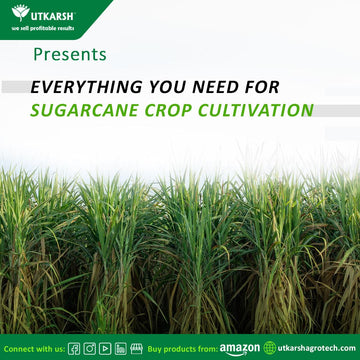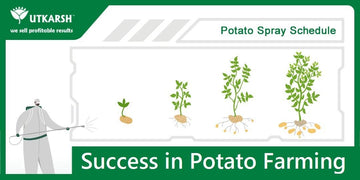
Cotton cultivation in 105 days
Cotton cultivation is a source of the daily-bread workers and farmers in almost all the tropical and sub-tropical areas and provides direct livelihood to more than 6 million farmers. It is one of the most important crops in the aspects of farming and it will not be wrong to say that it fetches a good price.
Many states of India such as the parts of Punjab, Haryana and northern Rajasthan in the northwest, Gujarat and Maharashtra in the west and plateaus of Telangana, Andhra Pradesh, Karnataka and Tamil Nadu in the south have majorly accepted cotton cultivation. It is observed that out of all the pesticides that are being produced, 44.5% is consumed solely by cotton cultivation.
But, at the same time, it is a lengthy task to produce a good yield of cotton crops. It requires a good amount of water which can be fulfilled by 50-100cm of rainfall or a good irrigation system and the report says that out of all the water used for irrigation in India, 6% goes to cotton cultivation.
Moreover, there are three main types of a cotton plant on the basis of its size and they are:
i) Long staple cotton – It has the longest fibre whose length varies from 24 to 27 mm and is used for making fine and superior quality cloth.
ii) Medium staple cotton – The length of its fibre is between 20 mm and 24 mm. About 44 per cent of the total cotton production in India is of the medium staple.
iii) Short staple cotton – This is inferior cotton with fibre less than 20 mm long. It is used for manufacturing inferior cloth and fetches lesser price.
Climate and Soil requirements
Cotton cultivation requires long frost-free periods, a good amount of heat and sunshine to have a fruitful yield. It tends to have a shorter germination rate if the soil temperature moves below 60°F (15°C). No frequent rainfalls during the maturing period and the harvest period are important key point while cultivating plants like cotton. They may survive in temperatures like 110°F (43°C) but their damage depends on the humidity levels.
Cotton plants quickly exhaust the fertility of the soil and therefore a regular application of manures and fertilizers to the soil becomes very important. It is advised that the Ph level of the soil must remain between 6 to 8 and its depth should not be less than 25cm. Cotton can grow in almost all well-drained soils but however, suitable soils such as – sandy loamy soil with enough clay, organic matter, and a moderate concentration of nitrogen and phosphorus.
Land Preparation
The land can be prepared by 1-2 cross harrowing at the times of normal monsoon. This will also help in conserving the moisture of the soil. If in case, the monsoon arrives late, land should be prepared with one round of ploughing.
Equal attention has to be paid to water management, weeds control and gap filling and thinning activities.
Sowing Management
Sowing is said to be rightly done only when the time of sowing the seeds, their seed rate and spacing and its treatment is done rightly. Sowing management is, therefore, a combination of all of these.
i) Time
If there is a proper irrigation system, the sowing can be done in the first week of June or in the absence of the same, the crops can be sown on the onset of the monsoon. Advance sowing can help in getting a better yield.
ii) Rate and spacing
The seed rate and spacing depend upon the variety of soil type, practices of cotton cultivation, and methods of sowing. For example- for irrigated conditions the seed rate of 6-10 litre/acre and spacing of 75-90cm between the rows is recommended, for rainfed desi-cotton, the seed rate of 4-6 liter/acre and spacing of 45-60cm between the rows is advised and similarly, for American cotton, the seed rate is advised to be 4-6.5 litre/acre and spacing of 60-75cm.
iii) Treatment
The seeds should be treated with 0.3% of dithiane M-45 solution for 30 minutes to control fungal diseases or 5litres of Utkarsh Sudoz can be used for soaking the seeds in the solution for 10 days before sowing and drying them in the sunlight.
Fertigation Schedule
Once these three factors are aligned, you can get ready for the actual procedure to start. Knowing which crop to produce is as important as knowing how to produce it. A proper schedule is a key component of producing any crops. Production of cotton plants takes place in the following steps:
Basal dose – Soil application

The application of basal dose of fertilizer to dibbled cotton crop should be given at the time of sowing by ring method 5 to 6 cm away from dibbled seed.
Delay application of basal dose of fertilizers reduces the yield of seed cotton to the tune of 10 to 40% with in late duration period of 10 to 30 DAS. Basal quantity should be 50 kg DAP, 25 kg MOP, and 10kg Marvelz-G.
Growth stage after germination

Once the seed has been sowed, and the plant starts to germinate, there is a growth stage cycle that follows after. For better yield of cotton cultivation, it is advised to follow this cycle that includes proper number of products at proper timings:
- Five days after germination – Root multiplier and stress free of 2 litres and 1 litre each
- After 6-12 days – 8 kg of 19-19-19 and 4 kg of urea.
- On the 13th day – it is advised to nourish it with 10 kg of magnesium sulphate.
- After 14-19 days – second round of 8 kg of 19-19-19 and 4 kg of urea.
- After 20-25 days – third round of 8 kg of 19-19-19 and 4 kg of urea.
Plant growth and flowering stage

After the plant seems to have a proper growth and seems to have flowers, there are stages of nourishing them with different products such as- a round of 6litres of horsepower and 1 litre of stress free after 26-30 days of sowing. Then after 31-36 days, you should consider a round of 12-61-00 of 6 kg and 3 kg of urea.
Similarly, a same round after 31-42 days and 49-55 days. Once the germination has been for 43-48 days, you can go on for another round of 6 litres of horsepower and 1 litre of stress free.
Flower and fruit setting stage

After some 56-60 days, it is advised to spray 6 litres of horsepower and 1 litre of stress free again. As the flowers starts to bloom and the plants are about to bore fruits, you can spray 0-52-34 of 6 kg and 2 kg of urea.
Repeat the same process again after 67-73 days and 73-80 days respectively with a hint of F-enhancer (0.5 kg) in the first round.
Fruit size and maturity stage

On the 81st day of the germination, nourish the plant with root multiplier of 2 litres and 0-0-50 of 6 kg after 92-96 days.
While this nourishes the plant, it also requires a regular dose of 0-0-50 of 6 kg and magnesium sulphate (5 kg) and Bhim plus(500ml) alternatively after 82-86 days, 87-91 days and 97-105 days.
Apart from the application of corrective products time to time, cotton cultivation also necessitates the application of timely spraying. Here is a list of products that are to be sprayed along with its time and amount:


It takes approximately, 180 days for a cotton plant to be harvested and the above mention 105 days marks the base of a fruitful harvest.
Farmers turn a land into fields of plants and plants into fruitful crops just like Utkarsh Agrochem, that provides a variety of products to nourish them all.
However, all of these comes by experience and hard work and this is a small guide to help the farmers throughout the journey of turning a plant into white-fluffy cotton balls.
The method of application and required dose for Cotton Cultivation can be easily found on our Website – Utkarshagro.com.
Following the above Fertigation and Spray schedule will definitely help you increase the Cotton Production by great quantity.
To know more about profitable cotton farming, Watch our webinar recording of Cotton Farming:
Simply order the number of 1-Acre-Kits as per the size of your farm and get the entire range of requirements covered in it.
Simply select the kit, that’s it. => Lesser Cost & Higher Profitability.
To shop a Cotton farming kit Click on this : https://utkarshagro.com/product-category/kits/




Following the above Fertigation and Spray schedule will definitely help you increase the Cotton Cultivation Production by great quantity.
May you have the best yield ever! Feel free to contact Utkarsh for any doubts and advice.
Mobile Numbers: 919824133044, +919924864422, +919824300544
Landline: 02621-255972
Email ID: rd@utkarshagro.com
You can stay connected with us and keep track of the latest updates. All you have to do is follow us here:
Chat: wa.me/919824133044
Facebook: https://www.facebook.com/utkarshagrochem/
Instagram: https://www.instagram.com/utkarshagrochem/
Website: https://utkarshagro.com/
Twitter: https://twitter.com/UAgrochem
LinkedIn: https://www.linkedin.com/company/utkarsh-agrochem-pvt-ltd/
YouTube: https://www.youtube.com/utkarshagrochem
Once again, all the products mentioned in this blog can be found on Amazon as well as the website of Utkarsh. Also, the method of application and the required dose can be easily found on our Website – Utkarshagro.com/shop.
Written by:
Beepasha Madhvani
Affiliate Writer with Monkey Ads





